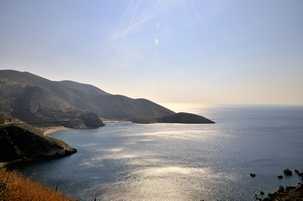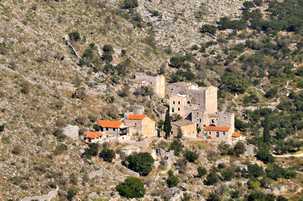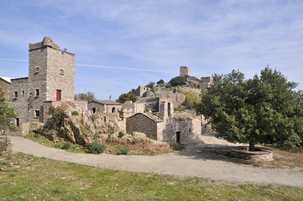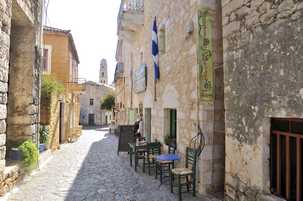|














"Greece... a small ship that travels eternally... with the purpose not only of birthing
but also of spreading and
transmitting great ideas round the world...”
|

Marmari

Pepo
|
Mani
Mani, forming one of the four smaller peninsulas of the
Peloponnese, is a historical region of the south
Peloponnese, an extension of the Taygetos mountain range,
and is bounded by the col of Mt. Taygetos and Cape Tainaros.
It is characterized by the rugged natural beauty of its
landscapes as well as the very distinctive architectural
style of its towns and villages. Dominating the landscape of
Mani are the so-called ‘war-towers’, the stonework
architecture of the towns and the defensive arrangement of
the dwellings and castles, along with a profusion of
archaeological sites and Byzantine churches containing
striking icons. In this area there are 98 of the 118
communities of the Peloponnese that have been officially
listed as traditional settlements for both the particular
lifestyle of the locals that they showcase and the loving
preservation of traditional buildings of great historical
and architectural value. Among the villages and towns of
Western Mani, of special interest are Stoupa and its
crystalline waters, Kardamyli with its cobblestoned
lanes and stone dwellings, the various Byzantine monuments,
Langada with its stone ‘tower-houses’ and the
villages Tseria, Kastania and Milia
nestled in the mountain of Taygetos. Some of the many
landmarks of Eastern Mani are Gytheio with its harbor
and its distinctive architecture, Areopolis with its
cobbled streets and its towers, the Caves of Diros,
Limeni opposite the Homeric Oitylo, Gerolimenas,
Vatheia, Kotronas and its beaches and
traditional architecture. Despite its extremely stony
ground, Mani is known worldwide for its unique plant life.
Meanwhile, the main cultivation is the olive which produces
one of the finest olive oils in the world.
|
|

Profitis Ilias Dimaristika |

Areopolis
|

Fonea Faraggi |
|